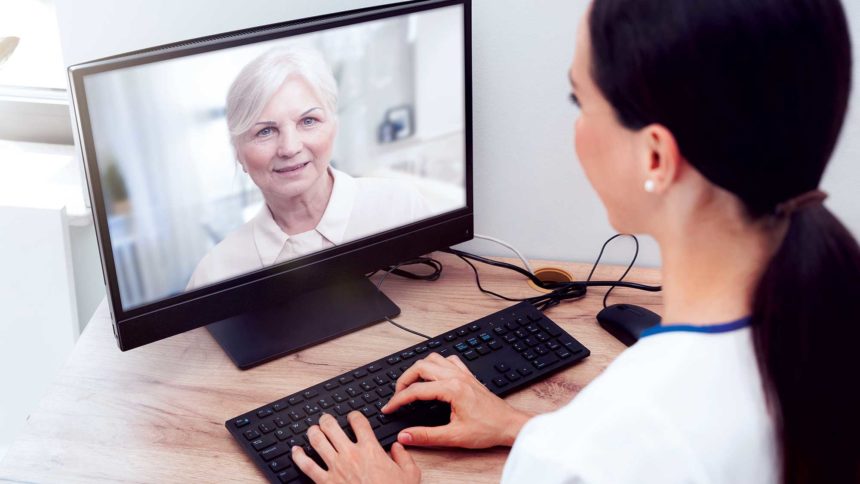
Skilled nursing facilities were able to completely eliminate disruptions and increase clinical care time during telehealth rounding sessions under a new framework developed by California researchers.
SNFs were able to decrease overall non-clinical care time from a high of 52.4% all the way down to zero by the end of a study published Tuesday in the Journal of Post-Acute and Long-Term Care Medicine. The project used data from more than 400 telemedicine encounters between April 2020 and Jan. 2021.
Researchers created two teams at the facilities: medicine and SNF teams. The medicine team — composed of a geriatrician, resident physicians and nurse practitioners — identified root causes of delays and interruptions during telemedicine rounds. The SNF team — composed of administrative leadership, case managers and nursing staff — took that input and established protocols for improving the encounters.
“The most common causes of delay were SNF staff’s lack of familiarity with the technology, not having the necessary equipment or staff at bedside during rounds, and WiFi connectivity issues,” the team wrote.
The teams then developed a framework for efficient telehealth rounds, stressing the need for HIPAA-compliant video platforms, strong bandwidth, a designated clinical staff member to perform necessary physical tasks during rounding, a team member that can operate video, and awareness of potential communication barriers between residents and staff.
“Through nine Plan-Do-Study-Act cycles, we revised our protocol to decrease the percentage of rounding time spent troubleshooting telemedicine-related problems and were able to demonstrate repeatability at three checkpoints,” the researchers said.
Based on the findings, they concluded “when optimized, telemedicine provides a valuable tool in delivering nursing home care during a pandemic crisis.”
“Optimistically, our hope is that the streamlined system will help enhance resources available,” investigators wrote. “Although imperfect, telemedicine is here to stay, with some studies showing 23 percent of patients reporting they plan to continue to participate in telemedicine even after the pandemic has passed.”





